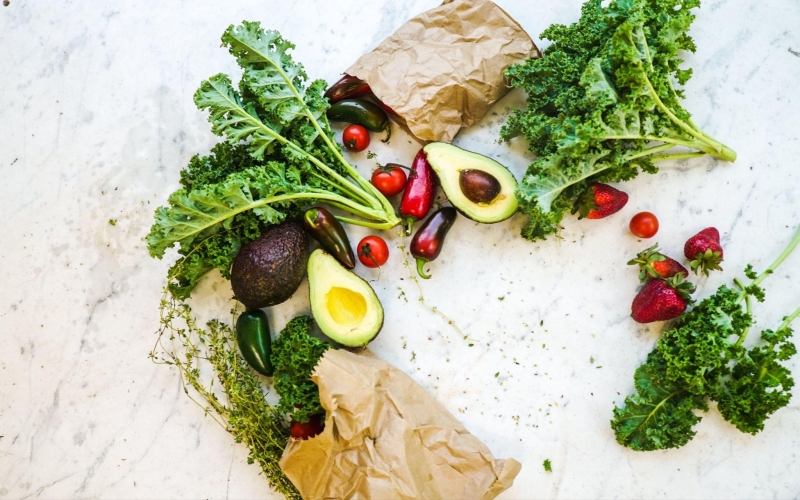Vegetables are an essential part of a healthy diet, offering a rich supply of vitamins, minerals, and fiber. Yet, many of us struggle to include enough of them in our daily meals. Whether it’s a lack of time, knowledge, or simply not being a fan of their taste, the challenge is real.
This article is here to change that. We’re not just talking about adding a side salad to your dinner; we’re exploring innovative and enjoyable ways to integrate more vegetables into your diet. From breakfast to smoothies, these tips are designed to make eating vegetables both easy and delicious.
1. Add to Breakfast Dishes
Cereals, bread, and eggs often dominate breakfast, but it’s also the perfect opportunity to get a head start on your vegetable intake for the day. Try adding spinach or kale to scrambled eggs or an omelet. These leafy greens are not only nutrient-dense but also cook quickly, making them an ideal breakfast companion.
For those who prefer a sweeter start, top your whole-grain toast with avocado and a sprinkle of chia seeds. This combination delivers a satisfying mix of healthy fats, fiber, and essential vitamins.
2. Turn Them into Soups
Soups offer a fantastic way to effortlessly incorporate a variety of vegetables into your diet. They are particularly useful for utilizing vegetables that are nearing the end of their shelf life, ensuring nothing goes to waste. For example, a simple roasted red pepper soup can be an easy way to enjoy a comforting and nutritious meal. Soups like this not only bring a burst of color and flavor to the table but are also packed with essential nutrients like vitamins A and C.
The beauty of soups lies in their versatility; you can experiment with a wide range of vegetables, from classic choices like carrots and celery to more unique options like butternut squash and sweet potatoes.
3. Drink Your Veggies
If you’re not a fan of eating your greens, why not drink them? Smoothies are a fantastic way to pack several servings of vegetables into a single, delicious drink. Try blending spinach or kale with your favorite fruits, like bananas or berries, to mask the taste of the vegetables. For a creamier texture, add a slice of avocado or a spoonful of Greek yogurt.
These additions not only enrich the flavor but also boost the nutritional value with healthy fats and proteins. Smoothies are not only quick and convenient but also a fun way to experiment with different vegetable and fruit combinations.
4. Transform Vegetables into Noodles
Vegetable noodles, or ‘zoodles,’ are a trendy and health-conscious alternative to traditional pasta. They are made by spiralizing vegetables like zucchini, squash, or carrots into noodle-like strands.
These veggie noodles can be sautéed, boiled, or eaten raw, and they pair wonderfully with a variety of sauces, from traditional marinara to creamy alfredo. Not only do they dramatically lower the calorie count of your dish, but they also provide a gluten-free option that’s high in nutrients and low in carbohydrates. It’s a novel and enjoyable way to increase your vegetable intake, especially for those looking to cut down on processed carbs.
5. Enjoy Vegetables with a Dip
Raw vegetables don’t have to be boring. Pairing them with a dip can turn a simple vegetable stick into a delicious snack. Try carrot sticks, cucumber slices, or bell pepper strips with hummus, tzatziki, or a yogurt-based dip. These dips add a flavorful dimension and can be a great way to get in extra protein.
Preparing a vegetable platter with a variety of dips can be a hit at parties or a healthy snack for movie nights.
6. Blend Vegetables into Sauces
Vegetables can be the secret ingredient in sauces, adding both flavor and nutrition. Pureeing veggies like tomatoes, carrots, or spinach and blending them into sauces is an easy way to enhance your meals. A classic tomato sauce can be enriched with pureed carrots and red bell peppers, offering extra vitamins and a subtle sweetness. Similarly, adding spinach to a pesto sauce or blending steamed cauliflower into an alfredo sauce can increase the nutritional content without compromising on taste.
7. Experiment with Vegetable Wraps
Vegetable wraps are a light, refreshing alternative to traditional sandwiches and wraps. Using large leafy greens like lettuce, kale, or collard greens as a wrap, you can fill them with a variety of ingredients such as grilled vegetables, hummus, beans, or lean protein.
This not only reduces the calorie count but also increases your daily vegetable intake. Vegetable wraps are perfect for a quick lunch or a healthy snack. They are easy to customize based on personal taste and dietary needs, making them suitable for everyone.
8. Make Veggie-Filled Sandwiches and Burgers
Sandwiches and burgers offer another excellent opportunity to increase your vegetable consumption. Try adding grilled vegetables like zucchini, eggplant, or bell peppers to your sandwiches for a burst of flavor and nutrients. For burgers, consider using portobello mushrooms or black bean patties as a meat alternative.
These options not only add a variety of textures and flavors but also contribute beneficial nutrients.
9. Incorporate Vegetables in Baking
Incorporating grated vegetables like zucchini, carrots, or sweet potatoes into bread, muffins, or cakes adds moisture and a subtle sweetness, along with a nutritional boost. Zucchini bread or carrot muffins are classic examples where vegetables enhance the taste and texture.
These baked goods are an excellent way to sneak more vegetables into your diet, especially for those with a sweet tooth.
Conclusion
Incorporating more vegetables into your diet doesn’t have to be a chore or a compromise on taste. As we’ve explored in this article, there are numerous creative and delicious ways to increase your vegetable intake. Whether it’s blending them into sauces, wrapping them up for a light lunch, baking them into sweet treats, or grilling them for a smoky flavor, the options are endless. The key is to experiment and find what you enjoy the most.


